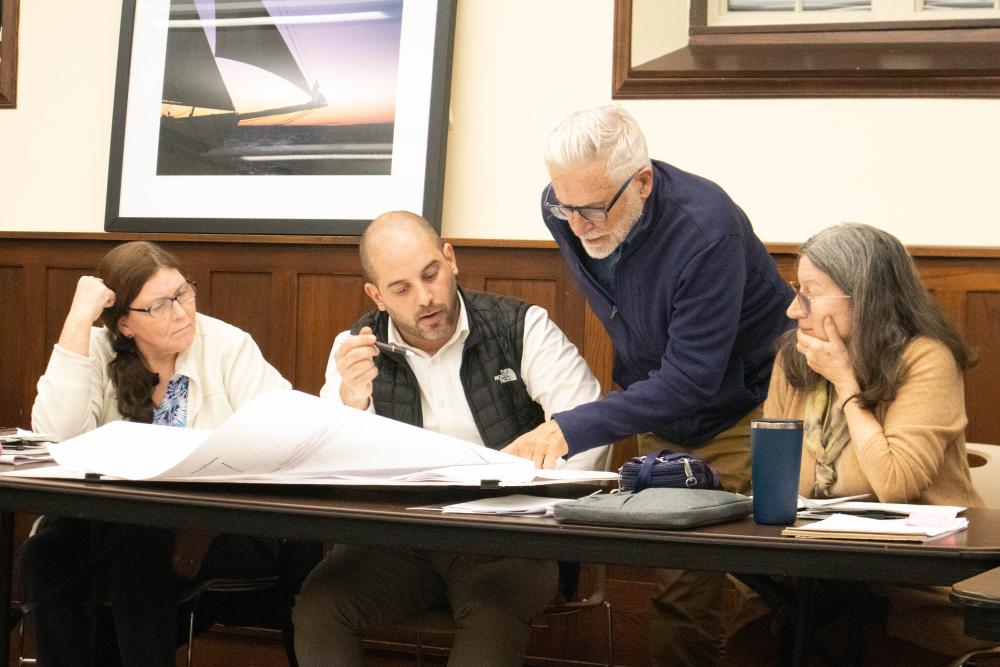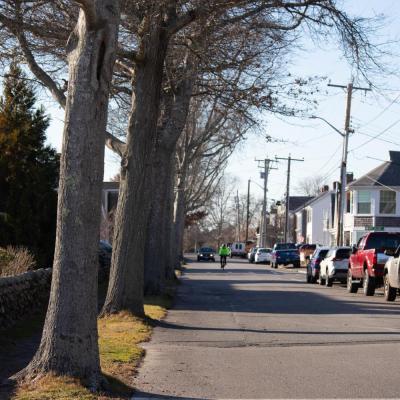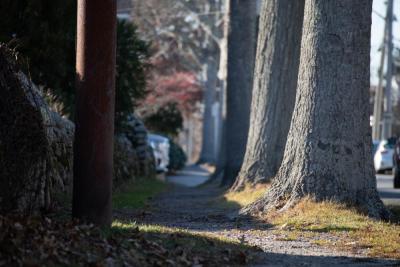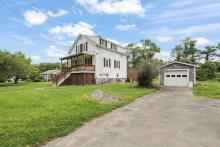Residents, tree committee share concerns on Main Street project
MATTAPOISETT — Mattapoisett … it’s special — and that includes the town’s scenic, tree-lined roadways, according to members of the Mattapoisett Tree Committee.
A project to improve Main Street, Water Street, Beacon Street and Marion Road with Americans with Disabilities Act-compliant sidewalks, stormwater filtration systems and to allow for the replacement of an aging gas line has drawn the attention of the tree committee and townsfolk concerned with the project’s impact on roadside trees.
The current proposed design for the project will require the removal of 28 trees — many of which must be removed to follow Americans with Disabilities Act guidelines that require sidewalks to have at least five feet of unobstructed space.
According to Mattapoisett Town Administrator Mike Lorenco, the project will be funded through the Transportation Improvement Program, or TIP, which allocates federal and state funds toward transportation infrastructure projects.
And along with state and federal funds come state and federal requirements, he explained at a Dec. 13 meeting of the Mattapoisett Tree Committee.
A five-foot sidewalk width “isn’t an ask,” said Lorenco. “This is a requirement, according to [Massachusetts Department of Transportation] regulations.”
He added that if the town did not use TIP funding for the project, then it would not have to follow federal guidelines. However, the taxpayers would then be footing the estimated $8 million bill — which Lorenco said will only grow the longer the project is put off.
According to Lorenco, the town can borrow money for a roadway project over a 15-year period. Factoring in interest, this could cost each Mattapoisett taxpayer $3,300 over 15 years, which comes out to approximately $220 per year.
Sidewalk placement
According to Mattapoisett Tree Committee Chair Sandra Hering, “the problem with the current plan” is the proposed extension of the sidewalk along the south side of Water Street.
“I just can’t see putting the sidewalk on the northerly side,” said Mattapoisett Select Board Chair and Tree Committee member Jodi Bauer on Nov. 14. “I can’t see people going back and forth across the road, I’d rather keep it all along the southerly side.”
Of the 28 trees set to be removed, roughly seven are the result of the Select Board’s decision to extend Water Street’s south sidewalk, said Lorenco.
“In making that decision … all of our old trees will be removed in that stretch. There’s a few — but very few — trees that will be untouched,” said Hering. “To me this shows the impact that will not, in my lifetime, be resolved by planting trees when the road comes in.”
The proposed plan also includes locations for tree plantings that will allow for a five-foot sidewalk.
Mattapoisett Tree Committee and Planning Board member William Wennerberg said he supports the roadway project, but proposed using this as an opportunity to introduce “appropriate” trees in “appropriate” places along Water Street where roots won’t grow into roadways or cause potentially unsafe walking conditions.
“The additional trees that will go in as a result of this project [could] be appropriate trees,” said Wennerberg. “We can build better roads — we can plant more appropriate trees … in more appropriate places. And 50, 60 or 70 years from now we can have a safer community with a more biodiverse tree canopy with a thicker [and more dense] tree canopy than what is available there now.”
This portion of Water Street is also designated as a “scenic road” which means that “any repair, maintenance, reconstruction or paving work done with respect thereto shall not involve or include the cutting or removal of trees” without consent of the Mattapoisett Planning Board, according to a town bylaw.
However, according to Lorenco, the opinion of town legal counsel is that the “[Mattapoisett] Planning Board doesn’t have the authority to supersede the [Mattapoisett Select Board] on a municipal project on a scenic road.”
“I know it doesn’t seem right, but they’re the executive office of the town,” said Lorenco. “They’re the ones in charge of the town’s money and the approval of town projects. … If the [Select Board] wants to put [the project] in front of the Planning Board, [the Select Board] can do that, but there’s no legal requirement for the [Select Board] to do that on a municipal project.”
‘Government is about compromise’
According to Lorenco, “government is a lot about compromise.” And the Dec. 13 meeting brought with it steps to inform the public about the potential fate of Water Street’s trees.
On a recommendation from Tree Committee member Michael Immel, the trees along Water Street will soon be marked with orange ribbon to denote that they will be cut down if the project comes to fruition.
“When you talk about [the project] abstractly — in the paper or in a meeting — we can’t see [the trees],” said Immel. “But when the tree warden puts a sign out there that says ‘this tree will go away,’ that’s a big help for people to see what’s going on.”
And Mattapoisett residents may soon have a chance to voice their opinion on this project and those trees in a public forum. According to Lorenco, the current 25% engineering plans went in front of the Massachusetts Department of Transportation on Dec. 5 and the state will have comments back to the town in January.
Then, if approved by the Department of Transportation, the state will hold a public hearing for Mattapoisett residents to ask questions, voice concerns and make comments that will be heard by the Massachusetts Department of Transportation and VHB, an engineering firm contracted by the town to design the project.
According to former Mattapoisett Tree Committee member Bob Carey, this project has bigger implications for how the town thinks about its trees.
“The town has to come to a consensus on the value of trees and what is that value as far as the character and the charm of the village that these trees provide,” he said. “But in the meantime … I think you’ve got to think outside the box a little bit.”















